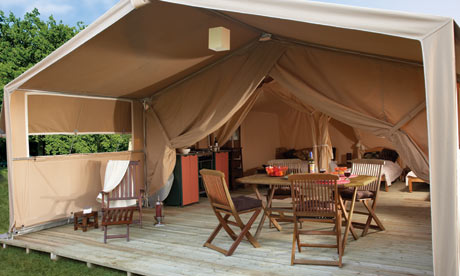Tel: 0845 163 1754_

Safari Tents, Yurts, Pods or Cabins?

The traditional Safari Tent, popular on the African plains, offers more space than a conventional tent and should come with a solid floor or deck. It is still a tent however so can only realistically be used in mild weather, prone as they are to overheating in strong sunlight, flapping in high winds and even leaking in torrential rain.
Yurts have been used in the more acute climate of Mongolia for centuries. With 30% of the population living in them, they've certainly stood the test of time. A true yurt has a woollen felt covering providing insulation under canvas to keep the weather out. Even then, Europeans lack the physiology of Mongolians and are reluctant to stay in Yurts in colder weather. Most surprisingly, the cost of a lined 20sqm yurt once erected is likely to top £12,000 without any sanitation, somewhat more than a solid 21sqm Camping Cabin with en-suite facilities.

Traditional log cabins are expensive to construct and require the same planning permissions as a house. Some mobile home manufacturers have adapted their units with wood effect PVC and while more attractive than stark white caravans, they are still far from natural and fail to blend into their surroundings. Typically a mobile home unit costs upwards of £50k.
The Camping Cabin came about following extensive research into both the needs of the market (warmth, security, proper beds and sanitation) and the structures currently available. We determined that camping pods were too small and lacked key amenities while log cabins couldn't deliver sufficient return on investment. Assuming occupancy rates between 35% and 80% even the least successful operator should recoup his investment within the first year. With no more than 2 days maintenance each subsequent year a Camping Cabin will last indefinitely, delivering its owner recurring, predictable profits.
